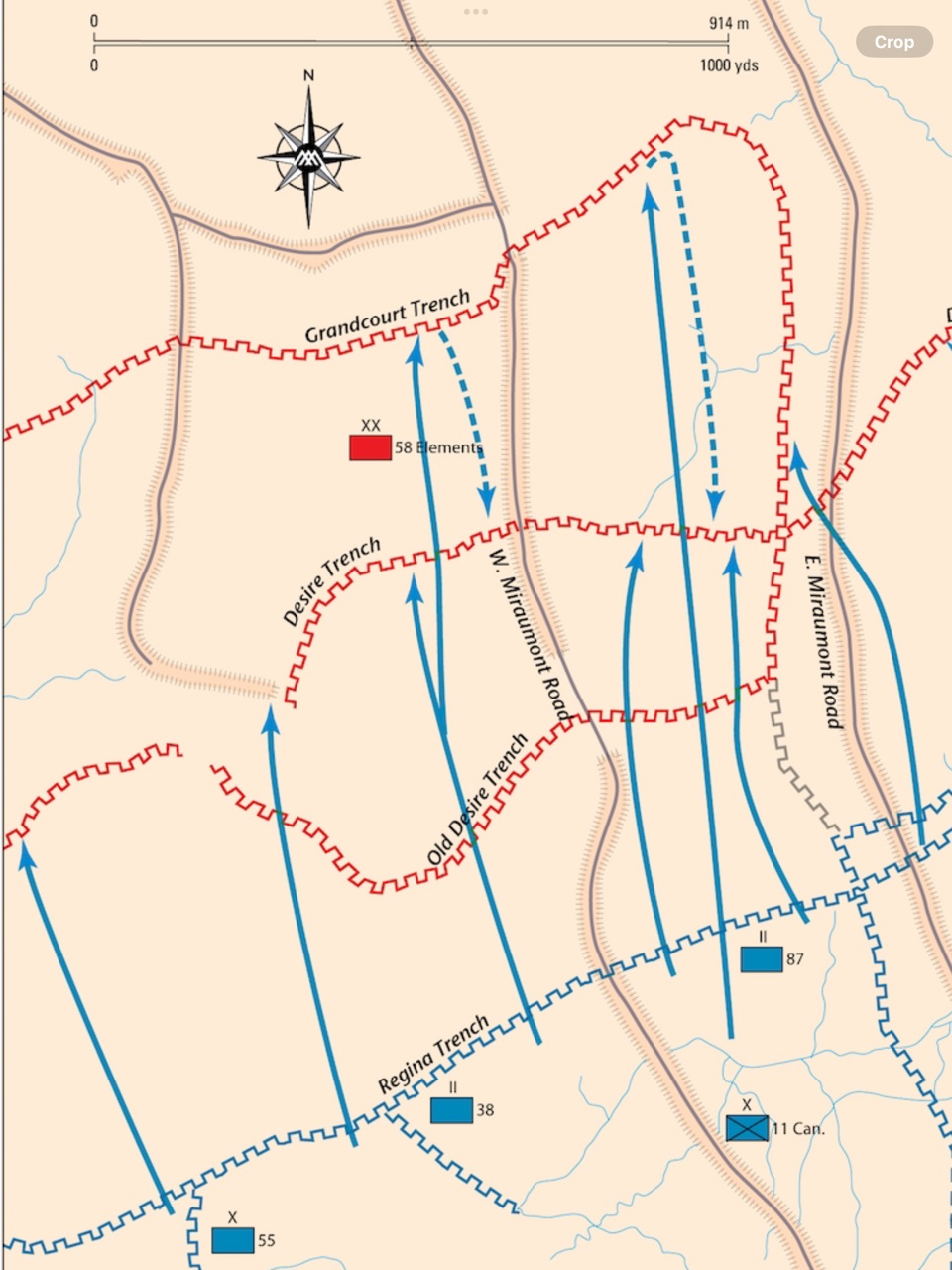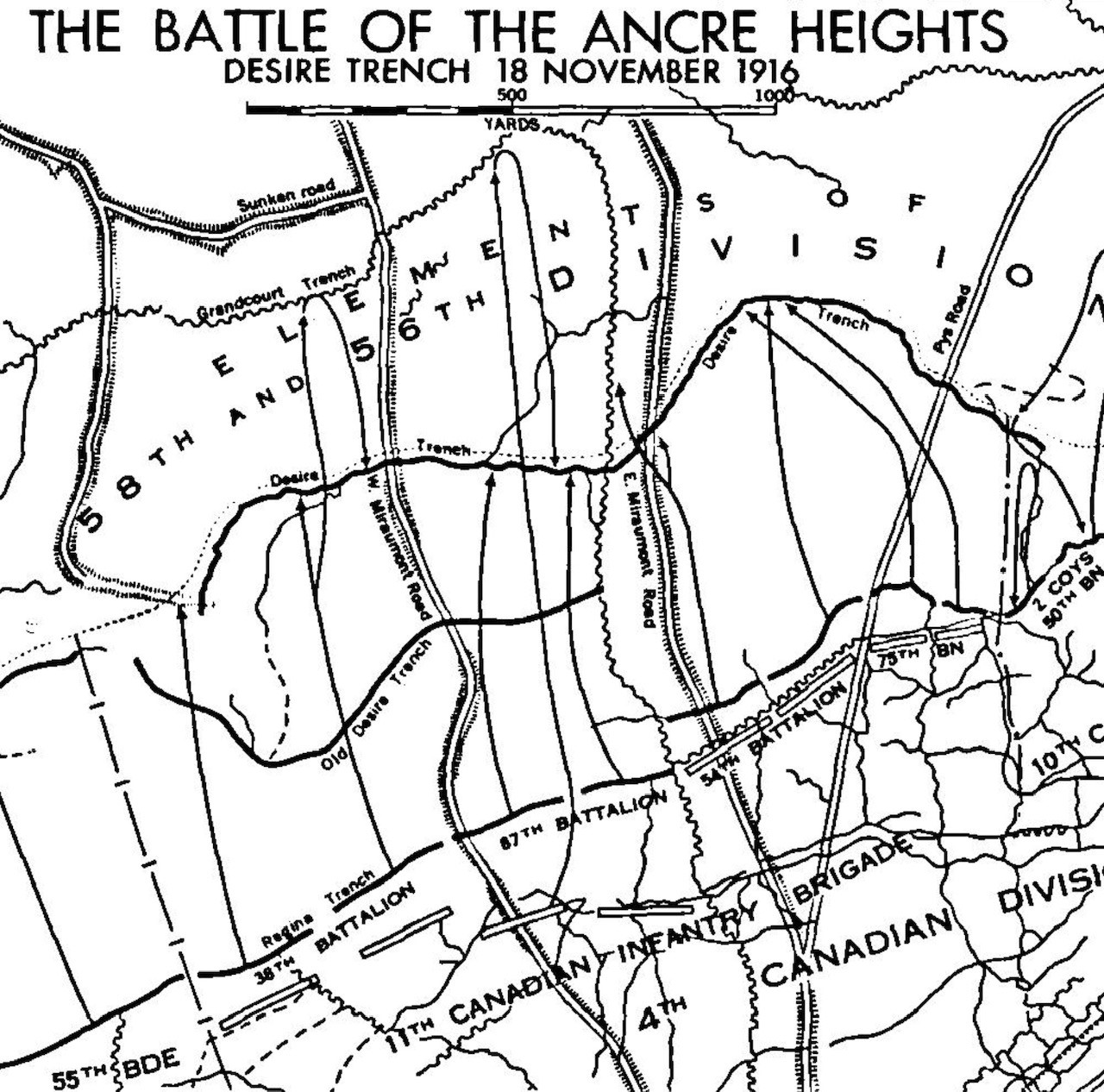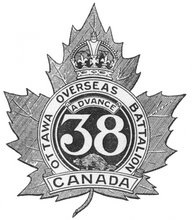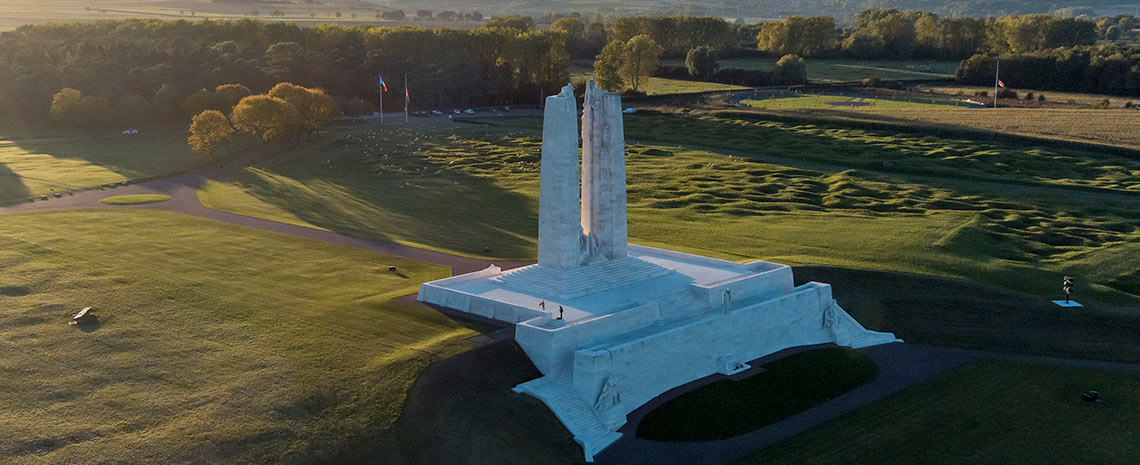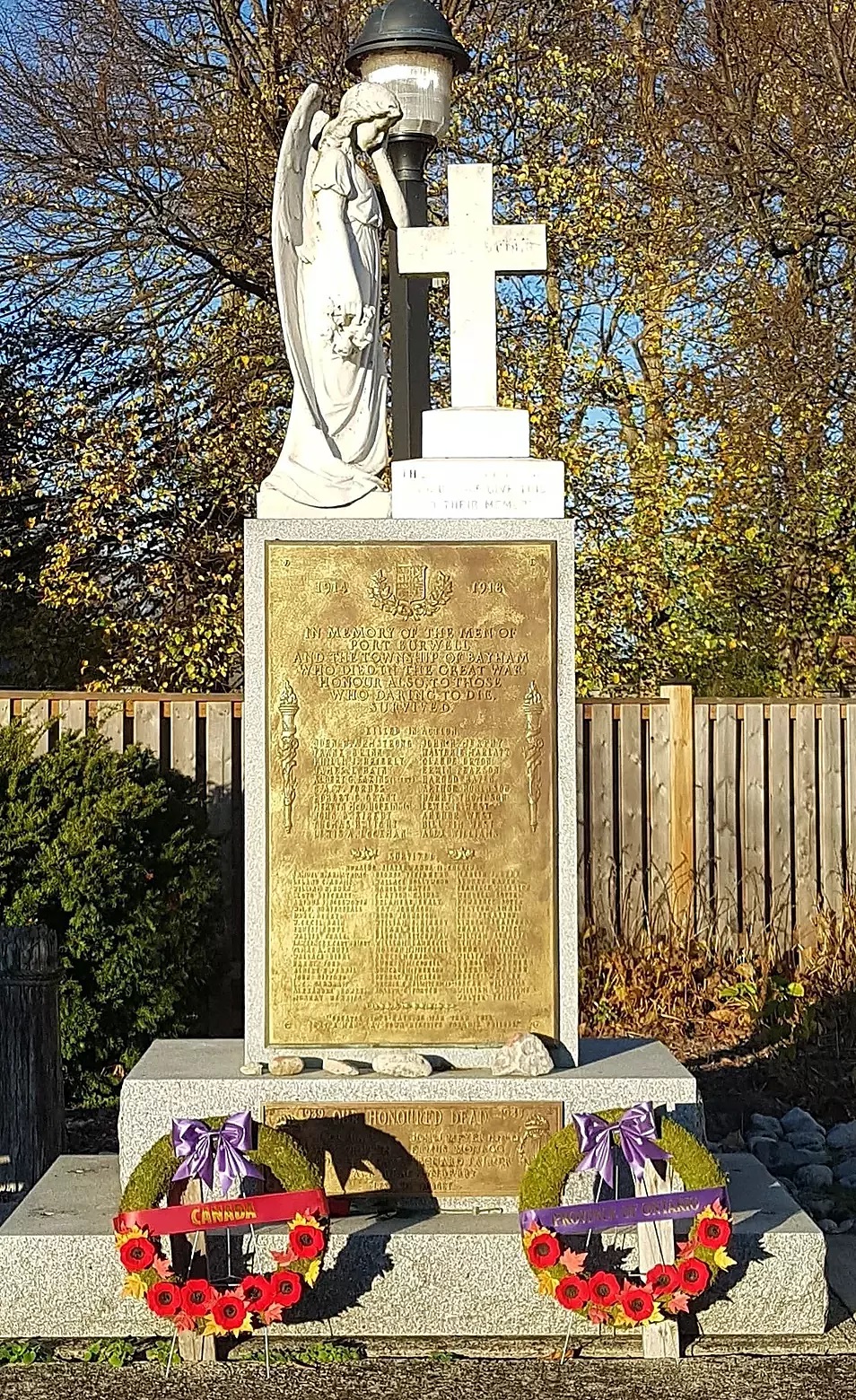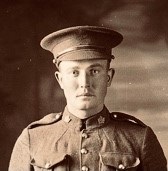Pte. John (Johnnie) Herbert Murphy
"C" Coy. 38th Battalion, CEF
Service No. 189927
Born 16 October, 1897, Dunboyne, Ontario, Canada.
Died 18 November, 1916 near Courcelette,
Pas-De-Calais, France.

Johnnie was born in Bayham Township, Elgin County,
Ontario, Canada to Charles Edward Jones Murphy and
Thurza Ann Light, aka. Edward and Annie Murphy. He was
the great grandson of Edward Jones Kniffen.
At the time of enlistment in the army, at the age of
18, he was living in Vienna, Ontario and was involved
in farming. He enlisted in St. Thomas on 28 January,
1916 and on his medical fitness certificate, signed in
Port Burwell, Ontario, he was recorded as being 5 ft.
7 ins. tall, light brown hair, blue eyes and a fair
complexion. His religion was shown as Methodist. His
Attestation Papers show him enlisting in the 91st
Overseas Battalion, Canadian Expeditionary Force. Then
on 28 June, 1916 Johnnie embarked on the troop ship
Olympic (sister ship to the Titanic) in Halifax, Nova
Scotia arriving in Liverpool, England 5 July, 1916 .
He then departed Southampton for Le Havre, France.
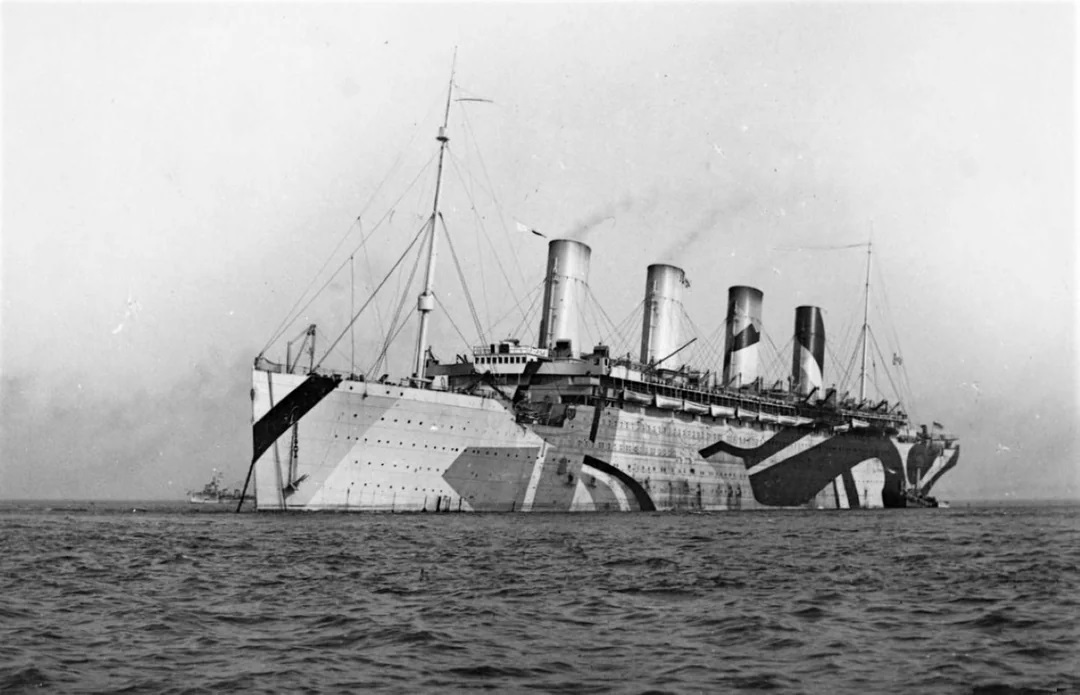
HMT Oylmpic in war-time dazzle camouflage.
His military records show that on 20 July, 1916 he was
transferred from the 91st Battalion to the 36th
Battalion, W. Sandling, then on 21 August, 1916 he was
transferred to the 38th Battalion, Havre, France. On
31 August, 1916 he was taken on strength (TOS) by the
38th Battalion. Then on the 27 September he left for
his unit in the field, arriving on 29 September, 1916.
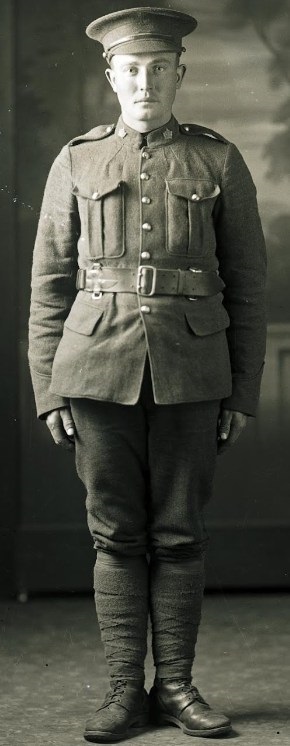
The Canadians arrived on the Somme in September 1916.
They relieved the Australians near Pozieres. What they
found was an obliterated landscape strewn with rotting
corpses. By late September the 38th was stopped near
the village of Epileque for refitting and training.
They replaced their Canadian made Ross rifles with the
superior British made Lee Enfield Mark 111
Rifles. Some Ross rifles were retained for
sniper use. It was at about this time that Johnnie
joined his battalion. They entrained at Saint-Omer,
reaching Canaas on 9 October and bivouacked on the
west slope of Tara Hill. Until 17 November, the 38th
was occupied with work parties and periods in the
front line. On the 17th November, the 38th took over a
section of the front line from the Royal Dublin
Fusiliers as part of the attack on the Desire trench
and Grandcourt.
Trench maps showing the battle field
The 38th Battalion was part of the 4th Canadian
Division which was to play a central role in the final
engagement of the Battle of the Somme. Its objective
was to capture the newly-dug Desire Fire Trench and
Desire Support Line to the north of the Regina Trench.
The Canadian contribution began in the early hours of
18 November. Overnight it had snowed and with a slight
temperature rise the previously frozen ground had
turned to mud. The falling snow had turned to sleet
and rain which greatly reduced visibility and made it
hard to navigate correctly. The strong winds and soggy
ground also reduced the accuracy of the Mortars.
Nevertheless, at 6.10 am, in limited visibility the
artillery and machine gun barrage commenced as the
38th "went over the top" for the first time. The
attacking battalions had been in, or in front of, the
Regina Trench waiting for the barrage to start. By
9.20 am and despite the whirling sleet the 38th had
taken the Desire Trenches and established a foothold
in the Grandcourt Trench. The 4th Canadian Division
succeeded in taking 627 prisoners. The 38th Battalion
had suffered about 500 casualties, one of them being
Johnnie Murphy.
John Herbert Murphy has no known grave.
He is remembered on the Canadian War Memorial at
Vimy Ridge and on the Port Burwell War Memorial.
|

|
